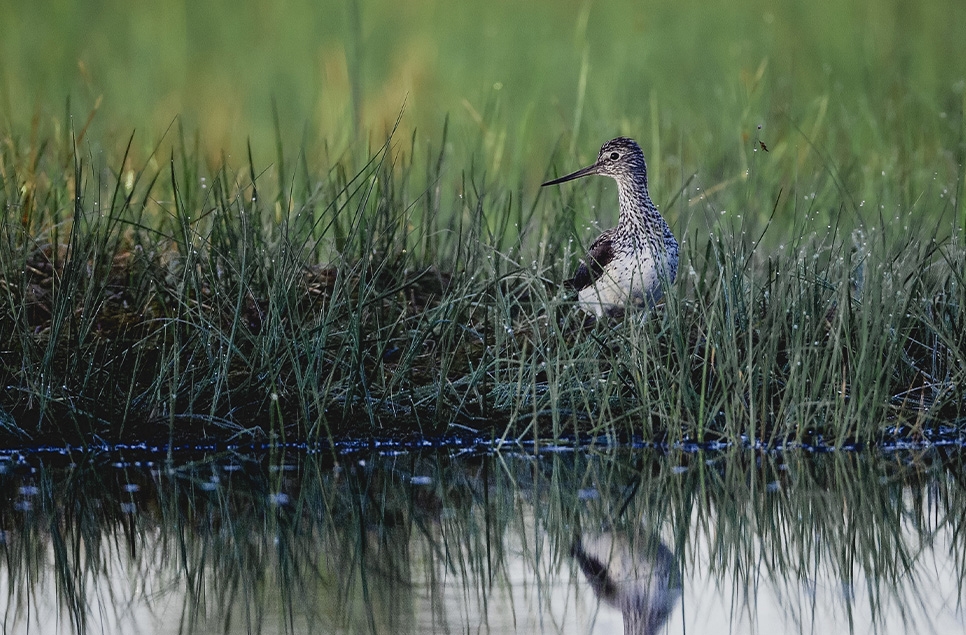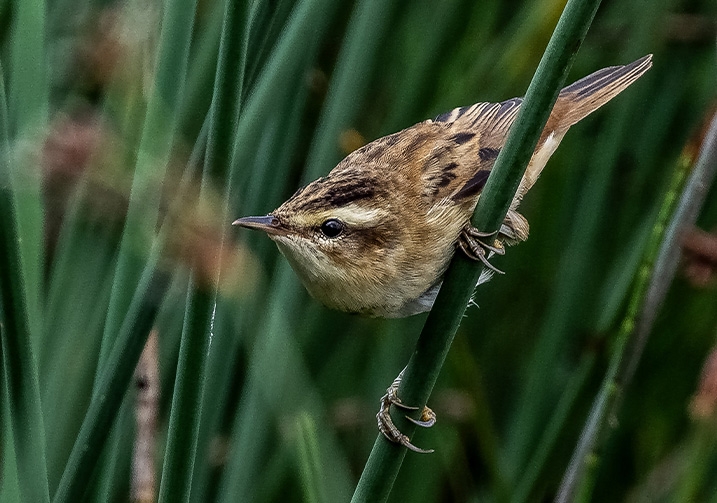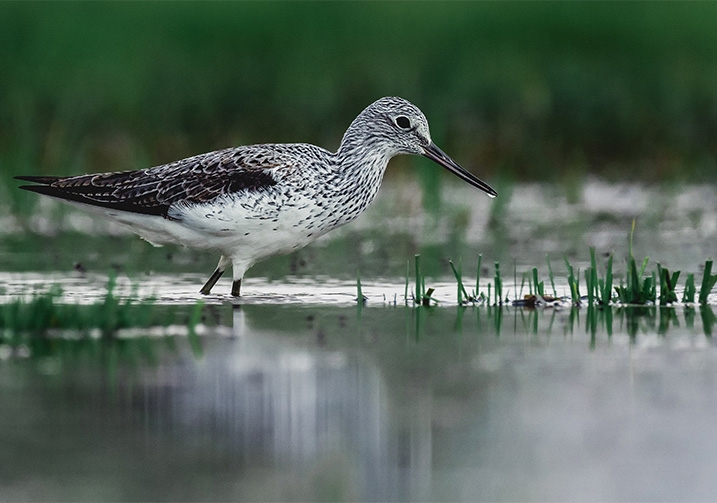Top 5 migratory birds to look out for on our reserves
At this time of year thousands of birds make an epic 4,000 mile journey from sub-Saharan Africa to the UK. Along the way they cross the largest subtropical desert in the world.

Their motivation for this long, treacherous journey is to find a partner in a good nesting habitat and raise young where food is plentiful. Wetlands tick all the boxes, which is why we welcome so many different species, often in large numbers, to our reserves each year.
Plentiful, healthy wetlands are also essential along migration routes, or flyways. Rather like service stations on our motorways, they provide food, shelter and a place to rest.
In celebration of World Migratory Bird Day on 11th May, we’d like to introduce you to some of our favourite wetland birds, as they arrive to spend the summer on the UK’s wetlands.
1. Sand martin
One of the first arrivals to look out for is the sand martin, zipping low over the water, chasing down insects to refuel after the long migration. Having spent the winter south of the Sahara, they start arriving on our shores in March. Like swallows, they’re one of the first signs of the arrival of spring. They’re the smallest of our spring arrivals measuring around 12cm.
They’re sociable birds and nest in large, noisy colonies in burrows in sandy cliffs, where they can tuck their eggs away from predators. They feed their young with flying insects, catching them on the wing in the same way swallows and swifts do.
Every spring, swirls of sand martins arrive as part of mixed flocks with house martins and swallows at WWT Arundel. The birds have been returning each spring since 2017 to raise their young in the nesting banks built into the wildlife hide. Visitors can watch the sand martins from the viewing hide nestled between the two banks.
2. Reed and sedge warbler
The chorus of warblers trilling across our wetlands is a lovely sound at this time of year. You’ll see them on all WWT reserves because of the expanse and quality of the reed beds (the warbler equivalent of a 5-star hotel - only perhaps a little muddier).
At WWT Slimbridge there are usually around 100 singing males on site by mid-May. The males sing to defend their nesting territory. You might also see them bobbing around, spreading their wings, fanning their tail and giving chase, all in the name of attracting a mate.
Surprisingly warblers can sing with their bills closed or full of food. They create the sound deep in their throats by exhaling air from their lungs. These cheery little birds can be spotted flitting across our reserves or dancing in the reed beds all through the summer.

3. Osprey
Ospreys are one of the most awe-inspiring of our summer visitors. With a wingspan of 1.5 metres, they’re one of the largest birds of prey you can see in the UK. In the early 1900s ospreys were driven to extinction on our shores. During the later part of the century, they made a comeback in Scotland and there are now around 300 breeding pairs in the UK.
As osprey only eat fish, they rely on wetlands for their food source. Watching them hunt is a spectacular sight as they stretch out their talons, dip down close to the water’s surface and scoop their prey out of the murky depths.
We’re lucky enough to have had ospreys nesting near WWT Caerlaverock in recent years. They can sometimes be spotted fishing on the Lochar river which flows through the Walk on the Wild Side meadow trail - open from May to September.

4. Hobby
A hobby is always an exciting bird to spot. Part of the falcon family, it’s around the same size as a kestrel but with longer wings. It’s a striking bird in flight, recognisable by an impressive ability to swoop and turn as they dive for insects on the wing, favouring dragonflies and damselflies. They’re even deft enough to catch swifts as they swoop over the reed beds.
With yellow ringed eyes and a short curved yellow beak, they look steely and alert. You might even spot the distinctive red feathers on their thighs. These red ‘trousers’ are the best way to distinguish a hobby from other birds of prey of a similar size. At this time of year, they can be spotted feeding over the reserve at WWT Slimbridge.
Hobbies arrive in the UK to nest, seeking out areas near wetlands both for food sources and habitat. They nest in trees but don’t build their own nests, preferring abandoned nests built by other birds where they will lay two or three eggs. There are thought to be only a few thousand breeding pairs in the UK and are mainly spotted in the south.

5. Greenshank
The scientific name for greenshank (Tringa nebularia) translates from the Latin ‘nebula’ as ‘mist' – perhaps a nod to its grey feathers, or the misty peat bogs of Scotland where it nests. A part of the sandpiper family, these elegant freshwater waders breed in Scotland on wet moorland and open peat bogs. They build their nests on the ground, making them particularly vulnerable to predators.
During the spring migration season, they can be seen on wetlands across the UK as they pass through on their way to their nesting grounds. Recognisable by their striking green legs (or shanks), they’re often seen feeding on coastal wetlands, inland lakes and freshwater mud flats as they dig for worms, snails and fish with their long beaks.
Greenshanks are shy, solitary birds and are usually spotted alone or in pairs. We’ve already been lucky enough to spot greenshank at WWT Llanelli. We expect to see them at most of our reserves as they make their way up north to breed.

Migratory birds are under threat, every year fewer return. Much loved species such as swifts and house martins are now on the IUCN red list as critically endangered. Healthy wetlands are essential to help these birds return to healthy numbers.
For a chance to see all these special birds and much more, visit soon and support our work. By supporting our wetlands, you’ll be helping thousands of migratory birds.
Plan your next visit


